 W
W10,000 Bullets, known in Japan as Tsukiyo ni Saraba , is a third-person shooter video game developed by Blue Moon Studio and published by Taito for the PlayStation 2 console. It was released in Japan in 2005, and distributed in Europe by 505 GameStreet later that year. 10,000 Bullets follows an elite hitman named Crow, who works for an Italian mob family and has the innate power of the "gunslinger", allowing him to manipulate the flow of time in battle. The gameplay of 10,000 Bullets focuses on this ability, in which the player must slow down the action in order to avoid the waves of enemy assaults and other hazards.
 W
WArc Rise Fantasia is a fantasy role-playing video game developed by Imageepoch and published by Marvelous Entertainment for the Wii. Arc Rise Fantasia was released in Japan in June 2009, and in North America in July 2010.
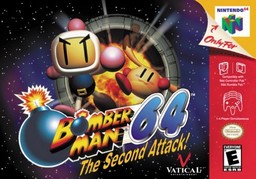 W
WBomberman 64: The Second Attack! is an action video game, the sequel to Bomberman 64 released in 1997. The game was not released in Europe. Due to a combination of releasing late in the Nintendo 64's life cycle, minimal advertising, and mediocre reviews, the game is considered one of the rarest titles for the console.
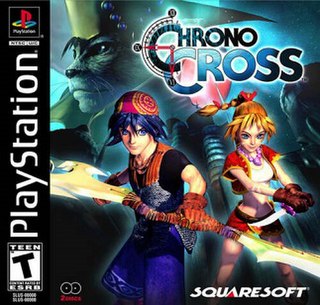 W
WChrono Cross is a 1999 role-playing video game developed and published by Square for the PlayStation video game console. It is set in the same world as Chrono Trigger, which was released in 1995 for the Super Nintendo Entertainment System. Chrono Cross was designed primarily by scenarist and director Masato Kato, who had help from other designers who also worked on Chrono Trigger, including art director Yasuyuki Honne and composer Yasunori Mitsuda. Nobuteru Yūki designed the characters of the game.
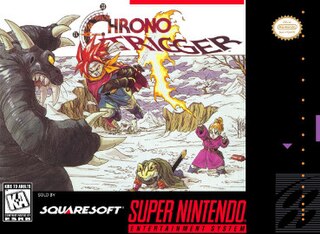 W
WChrono Trigger is a 1995 role-playing video game developed and published by Square. It was originally released for the Super Nintendo Entertainment System as the first game in the Chrono series. The game's development team included three designers that Square dubbed the "Dream Team": Hironobu Sakaguchi, creator of Square's Final Fantasy series; Yuji Horii, creator of Enix's Dragon Quest series; and Akira Toriyama, character designer of Dragon Quest and author of the Dragon Ball manga series. In addition, Kazuhiko Aoki produced the game, Masato Kato wrote most of the story, while composer Yasunori Mitsuda wrote most of the soundtrack before falling ill and deferring the remaining tracks to Final Fantasy series composer Nobuo Uematsu. The game's story follows a group of adventurers who travel through time to prevent a global catastrophe.
 W
WDeep Labyrinth is a 3D role-playing video game developed by Interactive Brains for mobile phone devices and the Nintendo DS handheld game system. Key contributors for this game include writer Masato Kato and composer Yasunori Mitsuda.
 W
WFront Mission Series: Gun Hazard is a 1996 video game developed by Omiya Soft and published by Squaresoft, and was released in Japan on February 23, 1996 for the Super Famicom game console. The game is the second entry in the Front Mission series, and is a side-scrolling role-playing shooter.
 W
WGraffiti Kingdom is an action role-playing game developed by Taito for the PlayStation 2 console in 2004, and is the sequel to Magic Pengel: The Quest for Color. The game's soundtrack was composed by Yasunori Mitsuda, better known for his work on Chrono Trigger, Chrono Cross, and Xenogears.
 W
WHalf-Minute Hero: The Second Coming is an action role-playing game developed by Opus and published by Marvelous. It is the sequel to Half-Minute Hero. It was initially released as a PlayStation Portable exclusive in Japan on August 4, 2011. It was later localized to English audiences and released via digital distribution on Steam for Microsoft Windows on April 4, 2014.
 W
WInazuma Eleven is a role-playing sports video game for the Nintendo DS developed and published by Level-5. It was released in Japan in August 2008, and was localized in English in 2011. The game was released in North America on February 13, 2014, as a downloadable game via the Nintendo eShop. This release includes updated graphics and visuals. The game was also included in an compilation for the Nintendo 3DS, Inazuma Eleven 1-2-3: Endo Mamoru's Legend, which released in Japan in December 2012.
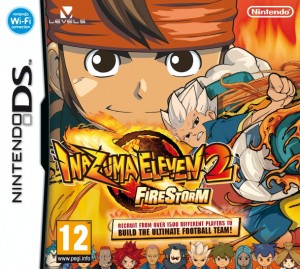 W
WInazuma Eleven 2 is a role-playing and sports video game for the Nintendo DS developed and published by Level-5. It was released on October 1, 2009 in Japan, and was released on March 16, 2012 in Europe. It remains unreleased in North America. There are 2 versions of the game, Firestorm and Blizzard.
 W
WInazuma Eleven 3 is a role-playing video game and sports video game for the Nintendo DS developed and published by Level-5. There are 3 versions of the game: Spark and Bomber, released on July 1, 2010 in Japan, followed on December 16, 2010 by The Ogre.
 W
WInazuma Eleven GO 2: Chrono Stone , or Inazuma Eleven GO Chrono Stones in Europe, is a role-playing video game and sports video game for the Nintendo 3DS developed and published by Level-5. It was released on December 13, 2012 in Japan and in Europe on March 27, 2015. There are two versions of the game, Neppuu, Wildfire in Europe, and Raimei ("Thunderclap"), Thunderflash in Europe. An Inazuma Eleven GO anime and manga based on the game began serialization in CoroCoro Comic, while an anime based on the game produced by OLM started airing on April 18, 2012. The story follows star Matsukaze Tenma his team, Raimon, and mysterious friendly allies who have come from the future, as they use a time machine to journey across history and attempt to prevent mysterious organisation from the future's plans to erase soccer from history.
 W
WInazuma Eleven GO: Galaxy is a role-playing video game and sports video game for the Nintendo 3DS developed and published by Level-5. It was released in Japan on December 5, 2013. No confirmation of a worldwide release has been given. There are two versions of the game, Big Bang and Supernova. An Inazuma Eleven Go Galaxy anime based on the game produced by OLM was aired from May 2013 to March 2014.
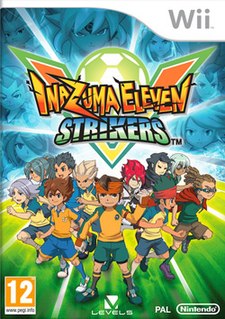 W
WInazuma Eleven Strikers is a role-playing and sports video game for the Wii developed and published by Level-5. It was released on July 16, 2011 in Japan, and was released on September 28, 2012 in Europe.
 W
WKid Icarus: Uprising is a third-person shooter video game developed by Project Sora and published by Nintendo for the Nintendo 3DS. Released worldwide in March 2012, it is the third installment in the Kid Icarus franchise; the first to be released since Kid Icarus: Of Myths and Monsters in 1991; and the first worldwide release since the original game in 1986. It is also the only video game to be made by Project Sora before it shut down in 2012.
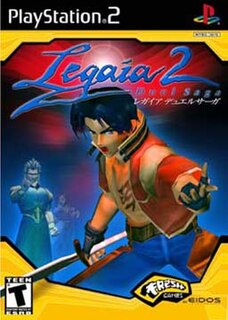 W
WLegaia 2: Duel Saga, known as Legaia: Duel Saga in Japan, is a turn-based role-playing video game and sequel to Legend of Legaia.
 W
WLuminous Arc is a tactical role-playing game developed by Imageepoch for the Nintendo DS, and the first in the Luminous Arc series. The game was released on February 8, 2007 in Japan, August 14, 2007 in North America, and October 18, 2007 in Australia by Atlus, and in Europe the following day by Rising Star Games.
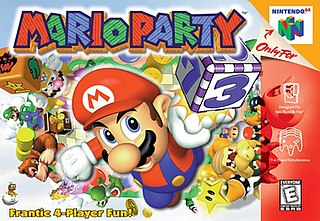 W
WMario Party is a party video game developed by Hudson Soft and published by Nintendo for the Nintendo 64 game console. It was released in Japan in December 14, 1998, in North America on February 8, 1999 and in Europe and Australia on March 9, 1999. The game was targeted at a young audience. During development, Mario creator Shigeru Miyamoto served as supervisor. Upon release, it received mostly positive reviews from critics, who commended its multiplayer mode, concept and music, but voiced disapproval of its slow pacing while giving mixed reviews of its graphics. It is the first installment in the Mario Party series and was followed by Mario Party 2 in 1999 for the same system.
 W
WMonster Kingdom: Jewel Summoner is a turn-based role-playing video game developed by Gaia and published by Sony Computer Entertainment and Atlus for the PlayStation Portable console. The game was released in February 2006 in Japan and in February 2007 in North America.
 W
WRadical Dreamers: Nusumenai Hōseki is a 1996 text-based adventure video game developed and published by Square for the Satellaview, a satellite peripheral for the Super Famicom. It forms part of the Chrono series, acting as a side story to the 1995 game Chrono Trigger. The game centers around an infiltration carried out by the titular thief gang led by Kid; aided by Serge and Gil, she seeks an artifact called the Frozen Flame and revenge on its keeper Lord Lynx. Players navigate the mansion's environments and impact the story's progression through text choices.
 W
WSands of Destruction is a role-playing video game developed by imageepoch and published by Sega for the Nintendo DS. It was released in Japan in 2008, and in North America in 2010.
 W
WShadow Hearts is a role-playing video game developed by Sacnoth for the PlayStation 2. Published in Japan by Aruze in 2001, it was published internationally by Midway Games in the same year and 2002 (Europe). The titular first game in the Shadow Hearts series, it acts as a sequel to the 1999 video game Koudelka, being set in the same world and featuring recurring characters.
 W
WShadow Hearts: Covenant is a role-playing video game developed by Nautilus (Sacnoth) for the PlayStation 2, and is the second entry in the Shadow Hearts series. Published in Japan by Aruze in 2004, the game was released internationally by Midway Games in 2004 and 2005 (Europe). A director's cut with additional content was released in Japan in 2005.
 W
WSoma Bringer is an action role-playing game developed by Monolith Soft and published by Nintendo for the Nintendo DS handheld video game console. The player, controlling one of the eight main characters, explores dungeons and fights enemies in real-time combat across three-dimensional plains from a top-down perspective. Multiplayer functions allow up to three players to participate in exploration and combat. The story focuses on the continent of Barnea: the principle magical energy, Soma, is being disrupted by the arrival of monsters called Visitors, prompting a military group called Pharzuph Division 7 to defeat the Visitors and restore the balance of Soma.
 W
WSoul Sacrifice is an action role-playing video game developed by Marvelous AQL, with assistance from Japan Studio, and published by Sony Computer Entertainment for PlayStation Vita. It was released worldwide in 2013.
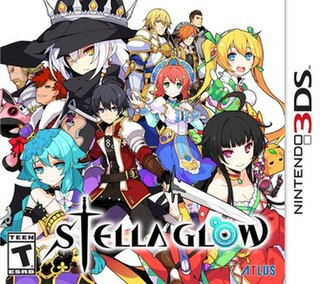 W
WStella Glow is a turn-based role-playing game developed by Imageepoch for the Nintendo 3DS. The game was released in Japan by Sega, in North America by Atlus USA, and in Europe and Australia by NIS America in March 2016. The game's story centers around a young man who must journey to unite four witches so he can save his home town from destruction. It is the last game developed by Imageepoch, before filing for bankruptcy.
 W
WTerra Battle was a role-playing video game developed by Mistwalker. It was released for iOS and Android devices on October 9, 2014. It was produced by Hironobu Sakaguchi, the creator of the Final Fantasy series, with music by Nobuo Uematsu of the same series. Service for the game was discontinued in June 2020.
 W
WTobal No. 1 is a fighting video game for the PlayStation developed by DreamFactory and published by Square in 1996. The game was DreamFactory's first release, as well as Square's first release on the CD-based console.
 W
WTsugunai: Atonement is a role-playing video game developed by Cattle Call for the PlayStation 2 game console. The game was published by Sony Computer Entertainment in Japan in February 2001 and was published by Atlus USA in North America in November 2001.
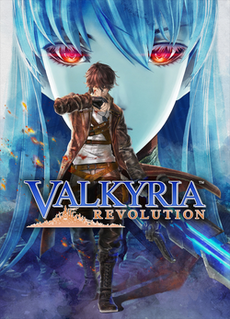 W
WValkyria Revolution is an action role-playing video game developed by Media.Vision and published by Sega for the PlayStation 4, PlayStation Vita and Xbox One. It was released in Japan in January 2017, and worldwide in June 2017. It is a spin-off of the Valkyria Chronicles series, set in a different fictional universe. The game received mixed reviews from critics, who praised the game's setting and concept as engaging but criticized the story delivery and large amount of loading screens, calling the gameplay and graphical quality lackluster.
 W
WXenoblade Chronicles is an open world action role-playing game developed by Monolith Soft and published by Nintendo for the Wii. Initially released in Japan in 2010, it was later released in the PAL regions in 2011 and then in North America in 2012. A port for the New Nintendo 3DS was released in 2015, and a high-definition remaster for the Nintendo Switch was released in May 2020. Xenoblade Chronicles is the first entry in the Xenoblade Chronicles series, a subseries which forms part of the larger Xeno metaseries. Although no direct narrative connections exist to previous Xeno games, it incorporates aesthetic and narrative elements from both fantasy and science fiction. The game features navigation through an open world split into zones, side-quests tied to party members' affinity, and a real-time action-based battle system which incorporates the main character's ability to see brief glimpses of the future.
 W
WXenoblade Chronicles 2 is an open world action role-playing game developed by Monolith Soft and published by Nintendo for the Nintendo Switch. Released worldwide on December 1, 2017, it is the third installment in Xenoblade Chronicles and the seventh main entry in the Xeno series. Plans for the game began shortly before the launch of Xenoblade Chronicles X in 2014. Key developers from previous games returned, including franchise creator Tetsuya Takahashi, and directors Koh Kojima and Genki Yokota. The team wanted to develop a story-driven game in the style of the original Xenoblade Chronicles. The game was announced in 2017 with a worldwide release date planned for the same year. As with Xenoblade Chronicles, the game was localized by Nintendo of Europe.
 W
WXenoblade Chronicles 2: Torna – The Golden Country is an open world action role-playing video game developed by Monolith Soft and published by Nintendo for the Nintendo Switch console. It is a story expansion to the 2017 game, Xenoblade Chronicles 2, and was released both as downloadable content and as a standalone title.
 W
WXenogears is a 1998 role-playing video game developed and published by Square for the PlayStation video game console. The debut entry in the larger Xeno franchise. The gameplay of Xenogears revolves around navigating 3D environments both on-foot and using humanoid mecha dubbed "Gears". Combat is governed by a version of the turn-based "Active Time Battle" system. The story follows protagonist Fei Fong Wong and several others as they journey across the world to overthrow the all-powerful rule of Solaris and uncover mysteries concerning their world. The story incorporates Jungian psychology, Freudian thought, and religious symbolism.
 W
WXenosaga Episode I: Der Wille zur Macht is a role-playing video game developed by Monolith Soft and published by Namco for the PlayStation 2; the game was released in 2002 in Japan and 2003 in North America. It is the first entry in the Xenosaga trilogy, and forms part of the wider Xeno metaseries. Gameplay features exploration of environments through a linear narrative, while battles use turn-based combat with the player characters fighting both on foot and piloting large mecha dubbed A.G.W.S.; combat in turn features a system of button combinations for attack types, and multiple leveling systems.